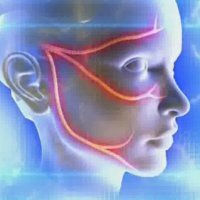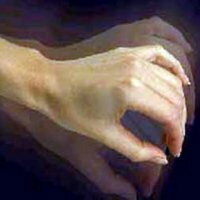Inflammation of the facial nerve

Under the inflammation of the facial nerve is meant one of the types of inflammatory process that develops in the peripheral parts of the central nervous system after trauma, intoxication of the body, poor blood supply, and any kind of metabolic disorders. In addition, the cause of inflammation can serve as a transferred infectious disease.
Neuritis of the facial nerve manifestations due to disruption of its functions, which in general due to otitis, hypothermia, and various infectious diseases of the nervous system, such as poliomyelitis, borreliosis and so on. The facial nerve can suffer from a temporal bone or brain tumor. This inflammation is mainly affected by people who have a narrowed bony canal from which the facial nerve passes. Any deviation from normal conditions can cause neuritis in such people, for example, the usual hypothermia. And the disease can happen again after a while.
Triangular facial nerve and its inflammation
The triple facial nerve can become inflamed due to scarring in the brainstem, neurinoma or meningitis. Sometimes the pressure on the brain is exacerbated by vessels or sclerotic changes in the arteries. The nerve can also be affected by any bacterial or viral infection.
In general, the pain manifests itself spontaneously, it is one-sided or shooting, it feels like a discharge of electric current. The pain can be both superficial and moderate, and very strong. The attack, as a rule, lasts no more than sixty seconds. Attacks of pain are transferred rather problematically, because they are repeated throughout the day more than once.
Any factors, such as washing, brushing teeth, light touch, eating, talking, shaving and even the most ordinary smile can provoke the pain.
Symptoms of inflammation
Immediately after the onset of inflammation, there is a sharp pain in the ears, and after a while a person may begin to develop a one-sided paralysis of the facial muscles of the face. The patient can not close his eyes or raise an eyebrow on the inflamed side. If a person attempts to smile, his lips unnaturally distort to the side of the healthy half of the face. In addition, tearing can be disturbed, a person will no longer feel the taste of food, since receptors located in the tongue will be disconnected. Immediately after the manifestation of such symptoms should immediately contact a neurologist. Usually in this case a person is registered for treatment in a hospital, and after the treatment is prescribed a course of treatment.
Treatment of the nerve of the innervating muscle of the face
There is no specific treatment for the facial nerve. The main task of medical personnel is to eliminate the cause that contributed to the onset of inflammatory processes. To do this, anesthetics and anti-inflammatory measures are taken, a vitamin complex is prescribed, physiotherapy procedures and medical massage are performed.
After the onset of the disease, it is necessary to drink an anti-inflammatory drug and go to an appointment with a neurologist. It is better to refrain from self-treatment in popular ways, as this will increase the duration of treatment. It is possible to achieve full recovery only in a stationary environment. In the hospital there is a course of antibacterial therapy, physiotherapy, intravenous drippers with drugs that improve the blood supply of the brain.
In addition to all of the above, still prescribed sedative injections and a course of hormonal anti-inflammatory therapy. The duration of treatment can range from fourteen to thirty days. All depends on the received results of therapy. Sometimes, in order to fully recover it will take half a year, and in some cases even a year. During the recovery period, the patient remains curved, he is prescribed acupuncture, massage procedures, reflexology, gymnastics of the facial muscles. Correction is carried out in the hospital with the help of a patch. The patient becomes in front of the mirror and with the help of a patch fixes the lips, eyebrow, eye in a normal position several times a day for two to three hours.
After the patient is discharged from the hospital, in addition to the medicines offered to him, the nerve can be further heated, using paraffin packs, salt, blue and red lamps for this purpose. It is desirable to make a tomogram of the cerebral cortex, as often neuritis develops due to intracranial pressure or multiple sclerosis.



